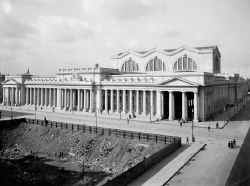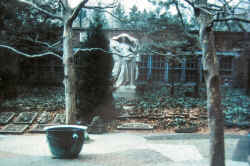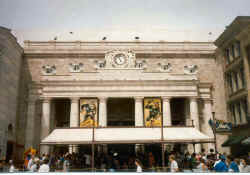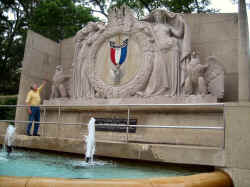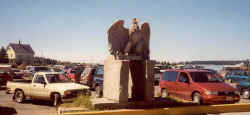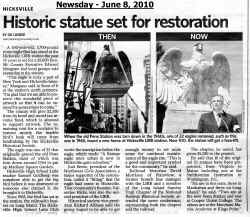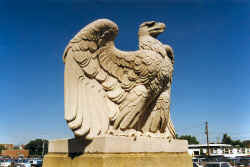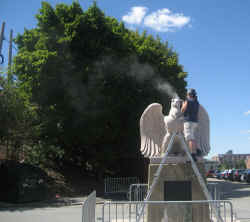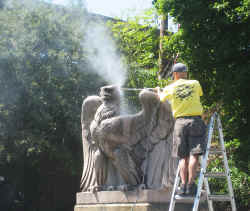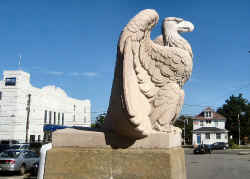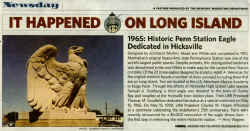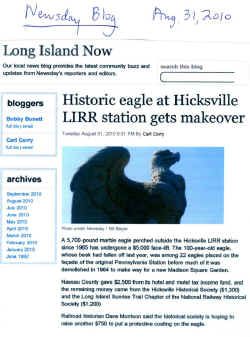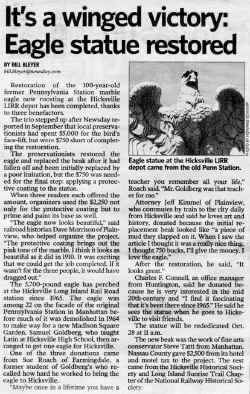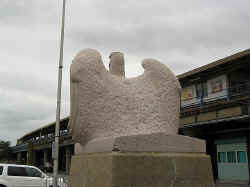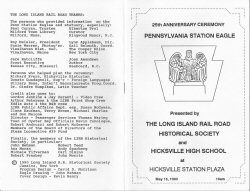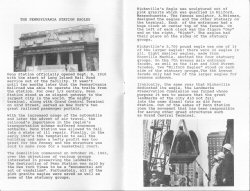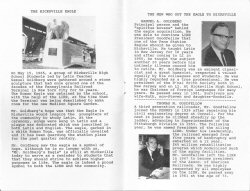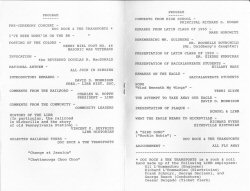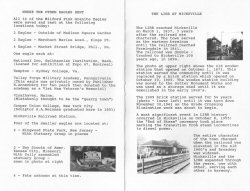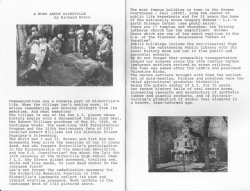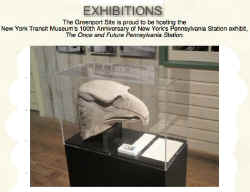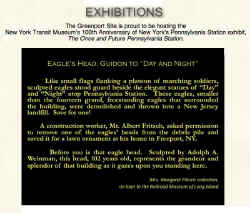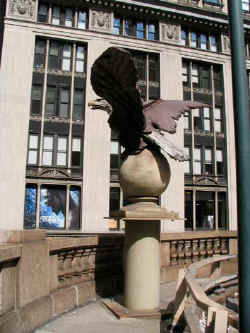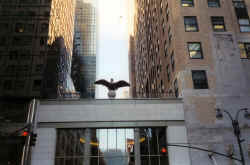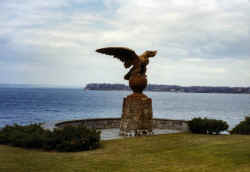New York City Station Eagles
Recent
photos of the New
York City Railroad Station Eagles - May 15, 2015
50th Anniversary year of the
New York City Landmarks Preservation Law
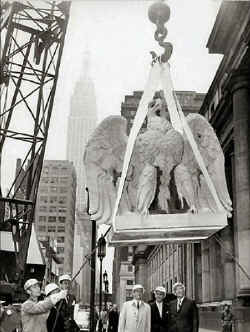
Hoisting the eagle down to a flatbed for transport. October 28, 1963 with the official start of the Penn Station demolition. The
three officials with suits and hard hats looking at the lowering; on the right is LIRR President Thomas M.
Goodfellow,
on the left is J. Benton Jones - VP of the PRR and center is Irving Mitchell Felt - President of Madison Square Garden (and thus the name "The Felt Forum"). Photo:
Newsday
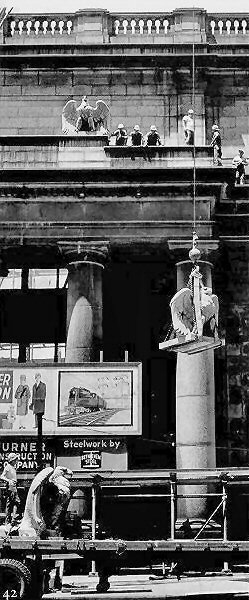
NY Times July 14, 1966 edition. It shows an eagle being
lowered from one of the last remaining facades to be demolished.
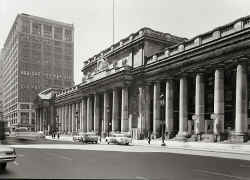
One can see the eagle’s original
perch above
the main entrance Penn Station c.1959
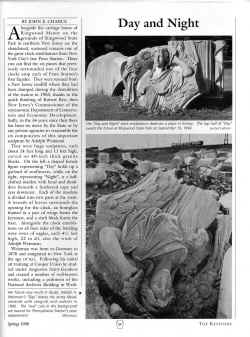
The Keystone: Spring 1998
Article: John E. Chance
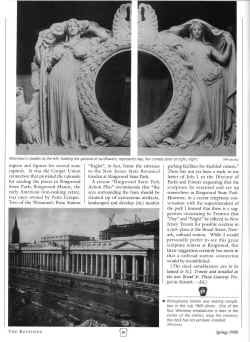
Article references Adolf Weinman sculptures: Eagles and "Day and Night"
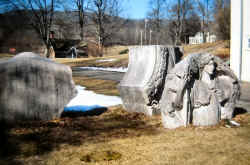
Figures of Day and Night, including the 2 smaller eagles adjacent to the figures, were for years located at Ringwood State Park in New Jersey.
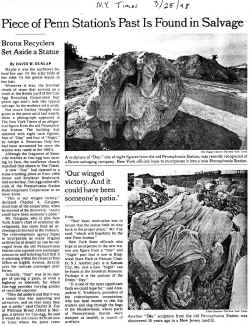
The NY TIMES pictured a "Figure of Day" in the New Jersey Meadowlands dump. This DAY would account for the third figure known to exist.
The two previously known DAYS were in the statuary groups in Kansas City and Ringwood State Park, NJ (now at the NJT Newark Training Facility) so it appears that all figures of DAY have been accounted for. March 25, 1998 NY TIMES
Penn Station Eagles:
2 - Seventh Ave (now in storage by the Realty Trust
Company)
1 - Cooper Union College
2 - Merchant Marine Academy
1 - Hicksville Station plaza
1 - Smithsonian Institution - in front of the Nat'l Zoo
1 - Hampden-Sydney College, VA
1 - Valley Forge Military Academy
4 - Market Street Bridge
1 - Vinalhaven, Maine
That accounts for the 14 free standing eagles. 2 eagles with full
statuary group are in Kansas City, MO
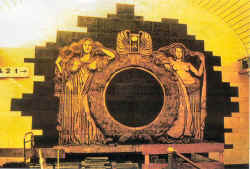
The Day and Night relief on the LIRR Concourse at Penn Station.
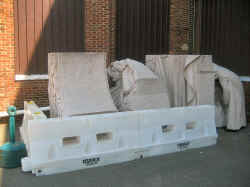
NJT Training Facility Newark, NJ c.2002, NJT obtained the statuary and had it restored by Steve Tatti. Since then, the statuary has languished outside of the NJT Training Facility building in Newark. Latest word is that the statuary might be placed at the new facility that NJT is planning at Penn Station.
Photo/Archive: Dave Morrison
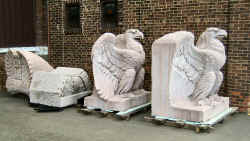
Uncrated 11/27/2010 -
Photo/Archive: Dave Morrison
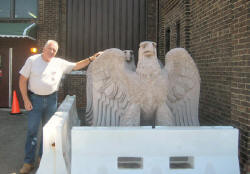
Morrison with uncrated eagle 11/27/2010
Photo/Archive: Dave Morrison
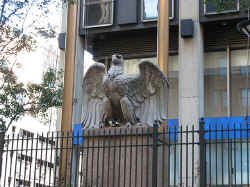
The other stone eagle on the left of the Penn Station entrance. Note its real feathered companion.
9/11/2010 Photo: Al Castelli
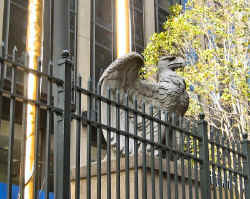
Nov. 27, 1910, Penn Station opened in New York City.
Centennial commemoration
photo Nov. 27, 2010
Dave Morrison
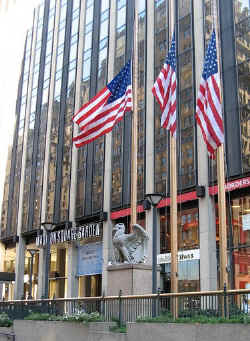
One of the stone eagles outside Penn Station on 7th Ave. This building is 2 Penn Plaza. 9/11/2010 Photo: Al Castelli
One of the two original stone eagles outside the current station. They adorned the original Penn Station. This is to the right of the station's current 7th Ave. entrance. 9/11/2010
Photo: Al Castelli
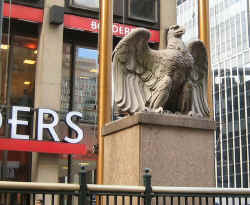
Nov. 27, 1910, Penn Station opened in New York City.
Centennial commemoration photo Nov. 27, 2010
Dave Morrison

One of the original 7,500 pound statue Penn Station eagles has been installed on an open air plaza between 33rd and 34th Streets, within developer Vornado’s Penn District. Ralph Ortega
History buffs have for years kept track of the whereabouts
of 22 granite and marble eagles that once graced the original Penn
Station. These nearly four-ton sculptures survived the station’s tragic
demolition in 1963 and were reinstalled as far away as Virginia, Maine and
even Missouri, where two became part of an Eagle Scout project.
While the surviving eagles found a second life, including one proudly
perched at the Long Island Railroad’s Hicksville station, two were
installed outside the 7th Avenue entrance of today’s Penn Station.
The website Untapped New York, however, discovered them missing in 2019.
They were moved into storage to make way for a facelift the developer
Vornado was giving to the exterior of 2 Penn Plaza, the tower that sits on
top of the station along with Madison Square Garden.
Now, five years later, one eagle has been quietly reinstalled on a plaza
between 33rd and 34th Streets, behind The Rutherford sports bar.
Vornado, which owns several buildings nearby, has completed a refresh of
the area and renamed it the Penn District. It includes new 7th
Avenue entrances into Penn Station and the Garden and 33rd Street
pedestrian plaza. The Metropolitan Transportation Authority
contributed a stunning glass mosaic at a new subway entrance off the
plaza, depicting the clock that hung at the entrance to the original
station. The district isn’t what advocates for building a new Penn Station
that evokes the original have hoped for, but it is a placeholder until a
new transit hub is built. Which makes the return of at least one of
the original eagles a welcome sight, that is if you know where to look.
- By Ralph R. Ortega - April 24, 2025 - cityandstateny.com/opinion
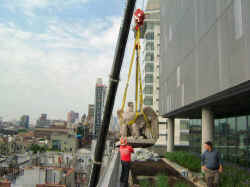
Hoisting of the eagle onto the rooftop. Photo: "Courtesy of Cooper Union"
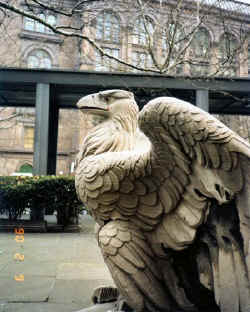
Manhattan Campus, NY 1990
Photo: Dave Morrison
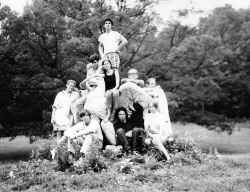
Green Campus in Ringwood, NJ
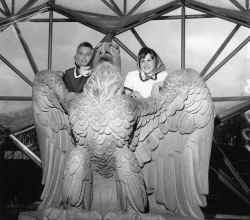
The Smithsonian eagle as it appeared at the US Pavilion of Expo 67, later returned to Washington. Photo: National Archives of Canada.
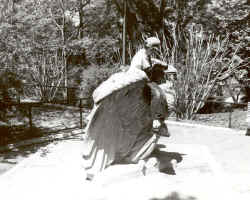
Smithsonian eagle with kids on it. Note: the Smithsonian eagle and the Cooper Union eagle are the only two mounted on diamond shaped bases. All others are on square bases
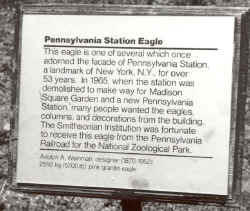
Smithsonian plaque with erroneous "pink granite" wording. Supposedly later changed. c. late 1990's
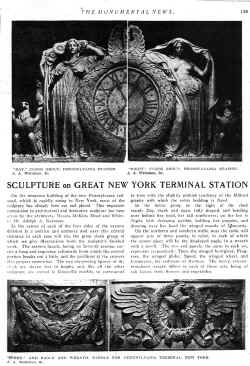
Early 1900's edition of Monumental News stating that all of the Penn Station statuary was carved from Knoxville Marble.
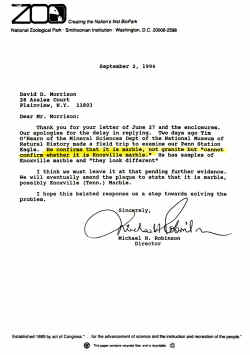
Smithsonian Institution letter stating that the quarry
stone is indeed marble and not granite.
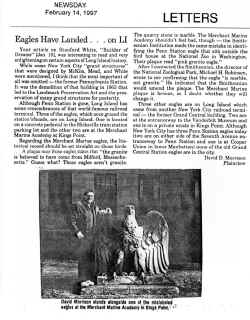
A letter that I wrote to Newsday setting forth the story of the quarry stone. Dave Morrison
PENN STATION EAGLE - Kansas City, MO
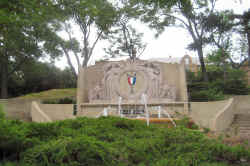
Vinalhaven, ME
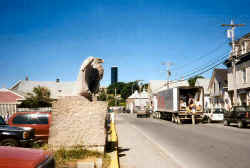
They got an eagle under the erroneous assumption that the "granite" was quarried in
Vinalhaven, Maine.
When it was later discovered that the "granite" was supposedly quarried in Milford, Mass., Vinalhaven decided to keep the eagle anyway and dedicate it to the local granite industry.
Much to their chagrin, the quarry stone is marble.
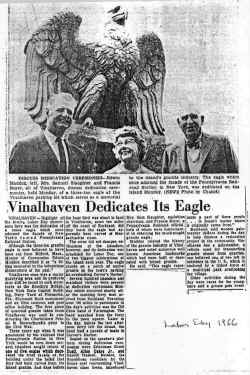
September 5, 1966
MERCHANT MARINE ACADEMY, Kings Point, NY
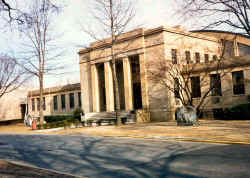
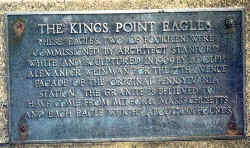 There are two at the US Merchant Marine Academy in Kings Point, NY. A nearby plaque identifies the eagles as being carved from Pink Granite quarried in Milford, Mass.
They are marble. Kings Pt. plaque erroneously referring to as pink granite.
There are two at the US Merchant Marine Academy in Kings Point, NY. A nearby plaque identifies the eagles as being carved from Pink Granite quarried in Milford, Mass.
They are marble. Kings Pt. plaque erroneously referring to as pink granite.
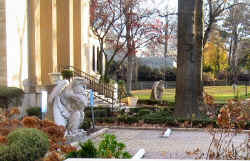
100 Years Penn Station opened. Eagle commeration photo Nov. 27, 2010 Dave Morrison
MARKET ST. BRIDGE, Philadelphia, PA
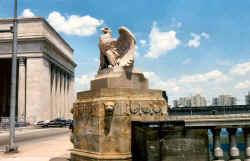 Four eagles are on the corners of the Market Street Bridge in
Philadelphia, PA. The HQ of the PRR was located nearby.
Four eagles are on the corners of the Market Street Bridge in
Philadelphia, PA. The HQ of the PRR was located nearby.VALLEY FORGE ACADEMY, Valley Forge, PA
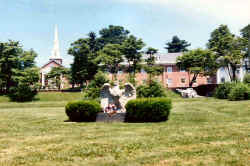 The Valley Forge eagle was originally owned by Walter Annenberg, who later donated it to the school in memory of Academy boys who had given their life in the nation's wars.
The Valley Forge eagle was originally owned by Walter Annenberg, who later donated it to the school in memory of Academy boys who had given their life in the nation's wars.
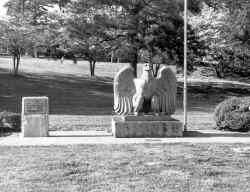 The Hampden Sydney College
received an eagle because William Lashley, who was VP of PRR Public Affairs, was an alumnus of the school.
The Hampden Sydney College
received an eagle because William Lashley, who was VP of PRR Public Affairs, was an alumnus of the school.
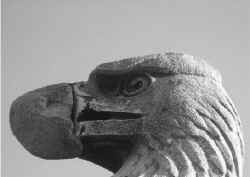
Close up view of the deteriorated beak - summer 2009 Location: Hicksville,
NY
Grinding work on the new beak was being performed today by Sculptor Vaja
Gabashville, who works for Steve Tatti. He plans on finishing the grinding/shaping work tomorrow.
After the beak is fully shaped, the stone will be finished to match the stone of the eagle.
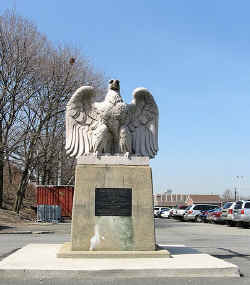
The eagle and its pedestal and plaque. The eagle was placed here in
1965 at the request of the Hicksville High School's Latin Club 4/10/2008 Photo: Al Castelli
This plaque is affixed to the pedestal of the Penn Station eagle
outside the LIRR's Hicksville
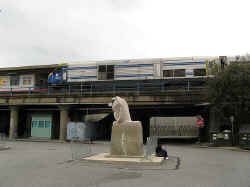
The location of the Hicksville eagle with an LIRR train pulling into
the station. 9/16/2010 Photo: Al Castelli
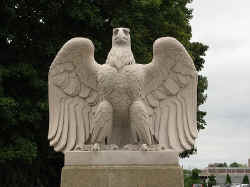
A front view of the Penn Station eagle outside Hicksville Station
9/16/2010 Photo: Al Castelli
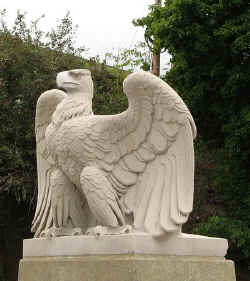
A 3/4 view of the Penn Station eagle outside Hicksville Station
9/16/2010 Photo: Al Castelli
LONG ISLAND RAIL ROAD HISTORICAL SOCIETY/HICKSVILLE HIGH SCHOOL May 15, 1990
Bird Week | A Penn Station Eagle in Poughkeepsie
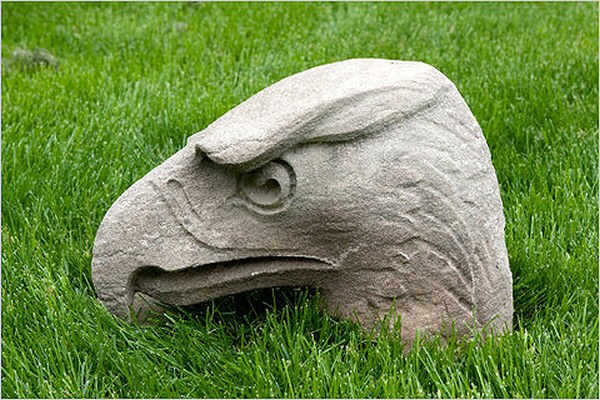
A pink lawn flamingo might
have done for anyone else in the 1960s, but Albert Fritsch had something
much, much better on his lawn in Freeport, NY: an eagle head from
Pennsylvania Station — that civic masterwork by McKim, Mead & White
whose destruction ranks in landmark annals with the sack of Rome.
Now, Mr. Fritsch was no
vandal. He was a mechanic on the Pennsylvania Railroad at the time of the
station’s demolition. And he saved this exceptionally handsome
sculptural fragment from almost certain destruction.
“He was just about to get
on a train when he noticed the eagle head in the rubble,” his
granddaughter, Margaret Flitsch, recalled. “He asked the superintendent,
‘Can I take this?’ The man said: “Knock yourself out. It’s going
to the landfill in Jersey anyway
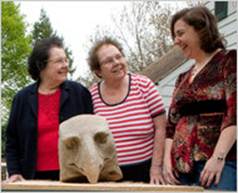 Kelly Shimoda for The New
York Times Margaret Flitsch, left; her sister, Mary Fritsch, and her
daughter, Margaret.
Kelly Shimoda for The New
York Times Margaret Flitsch, left; her sister, Mary Fritsch, and her
daughter, Margaret.
So home it came, swaddled
in newspapers. And it has remained in the family’s hands ever since,
even as the family changed its name ever so slightly, from Fritsch to
Flitsch. That story is too good to withhold, even though it has nothing to
do with the bird head on the lawn:
Albert’s daughter
Margaret Fritsch attended Hunter College in the 1950s. She found herself
in a chemistry class in which one Richard Flitsch was also enrolled. Since
lab partners were assigned alphabetically, they wound up together.
Evidently, the chemistry did not end when the lab did. They married and
she became, for official purposes, Margaret Fritsch Flitsch. Their
daughter, also Margaret Flitsch, invites us to imagine the consternation
among bureaucrats when she is asked her mother’s maiden name.
Anyway, back to the eagle.
After Mr. Fritsch died in 1992, the eagle migrated to his daughter’s
house in Poughkeepsie. And Margaret Flitsch, the granddaughter, would
wonder about the sculpture whenever she visited from Wellesley, Mass.,
where she teaches phys ed in public school. So she did what we all do when
we’re curious. She Googled.
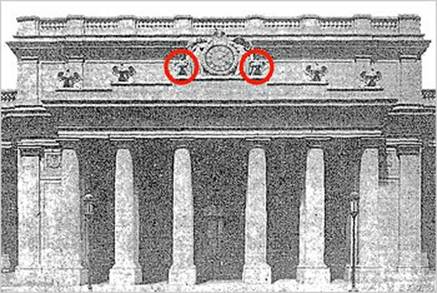
The New York Times The eagle head most likely came from one of the birds
(circled in red) that flanked the statuary groups known as “Day” and
“Night.”
All roads led to David D.
Morrison of Plainview, N.Y., a railroad historian who may know more about
the eagles of Pennsylvania Station and Grand Central Terminal than anyone
else on earth. It is a rare scholar who could
map the location of every known eagle salvaged from these buildings. Mr.
Morrison is such a scholar.
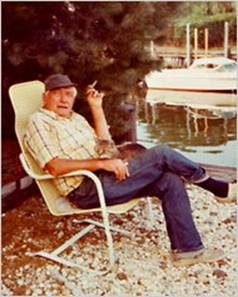 Kelly Shimoda for The New York Times. The eagle head salvaged by Albert Fritsch from Pennsylvania Station in the early 1960s.
Kelly Shimoda for The New York Times. The eagle head salvaged by Albert Fritsch from Pennsylvania Station in the early 1960s.
The cornice sculptures at
Penn Station were the work of Adolph A. Weinman. Mr. Morrison knew that
all 14 of the freestanding eagles had been salvaged whole and could be
accounted for. It seems that even the barbarians who tore the building
down recognized the eagles’ aesthetic — or at least patriotic - value.
What went missing, Mr.
Morrison also knew, were four of the eight smaller eagles that flanked the
allegorical sculptures "Day"
and "Night". The
Pennsylvania Railroad unceremoniously dumped at least some of these
sculptural groupings, along with many other exquisite architectural
elements, in the Meadowlands, where they were photographed years later by
Eddie Hausner of The New York Times. The “Day” and “Night” eagles
would probably have been of less interest to salvagers than their
freestanding counterparts since they were not entirely modeled, missing a
section of wing at the juncture with the allegorical figures. That may
explain why the head that Mr. Fritsch found was severed cleanly away as a
souvenir, though it doesn’t account for its presence in a rubble pile.
Meanwhile, playing
e-detective, Ms. Flitsch “friended” Mr. Morrison, then ferreted out
his address. On Easter, she remembered to take along a digital camera when
she visited her mother. She snapped a few pictures and sent them on to Mr.
Morrison, asking him if family legend aligned with fact.
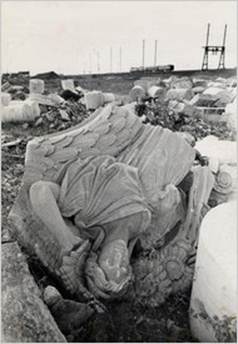 Eddie Hausner/The New
York Times “Day” in the dump. 1968.
Eddie Hausner/The New
York Times “Day” in the dump. 1968.
After he compared photos of
the Fritsch/Flitsch eagle with photos of the original Weinman sculptures,
Mr. Morrison’s verdict was most encouraging. “They certainly look to
me to be birds from the same flock,” he said. He alerted the New York
Transit Museum, which may include the head as an extra added attraction in
its current exhibition, “The
Once and Future Pennsylvania Station.” The paradox requires no
further comment: should the eagle return temporarily to Manhattan after a
half-century absence, it will be at Grand Central Terminal.
Ms.
Flitsch is not exactly sure what she and her mother and her aunt
will finally do with the head. For the time being, she said, “It’s
exciting to me that it can be shared.”
And
that sentiment puts her family squarely in a great tradition of the
citizen salvagers of Pennsylvania Station (“A
Quest for Fragments of the Past; Calling Penn Station’s Scattered
Remains Back Home,” Aug. 16, 1998). Thirteen years ago, when the
never-ending Penn Station redevelopment story was a bit younger, the state
corporation charged with the project put out a call for remnants to
incorporate into the planned reconstruction.
At the time, Alexandros E. Washburn, the president of the Pennsylvania Station Redevelopment Corporation, said: “People — not governments or corporations or institutions — have been keeping the memory of Penn Station alive for 35 years. We’ve found threads from the fabric of Penn Station stretching across the country.”
Now it looks as if Poughkeepsie can be added to this honorable atlas. By David W. Dunlap
The
Eagle head that I told you about has so far been on display at:
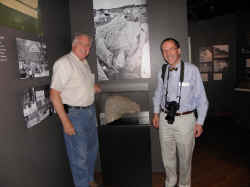 New
York Transit Museum
New
York Transit Museum
Dave Morrison and David Dunlap of the NY Times (right)
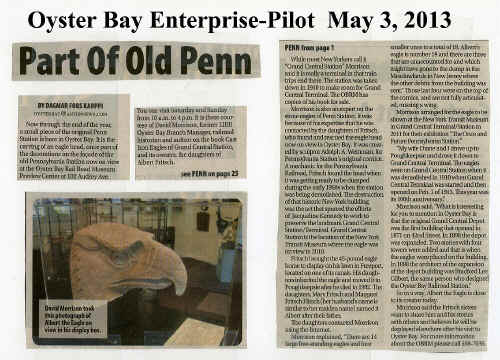 Oyster Bay Railroad Museum - currently
Oyster Bay Railroad Museum - currently
It is scheduled to be on display at the Museum of the City of New York in April 2015.
After the Museum of the City of New York exhibit is completed, the eagle head will be once again
be available for display.
I
thought it fitting that the eagle head could be on display at the Railroad
Museum of Pennsylvania.
I've
attached a photograph showing you the eagle head and display case when it
was at the NY Transit Museum. That is me on the left and David
Dunlap of the NY Times on the right.
The two
photos show the eagle head on display at the Railroad Museum of LI (above)
and the
last image is an article that appealed in the local Oyster Bay newspaper
in 2013.
I
hope that the eagle head will find a home in Pennsylvania.
Dave Morrison with Albert Display in Moynihan Hall
at the LIRR ticket office 2/18/2022
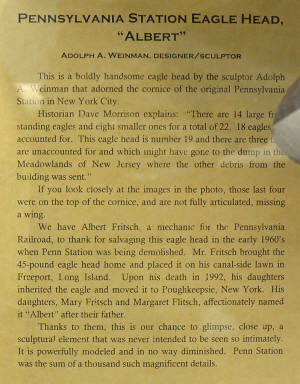
"Albert" Eagle story 2/18/2022
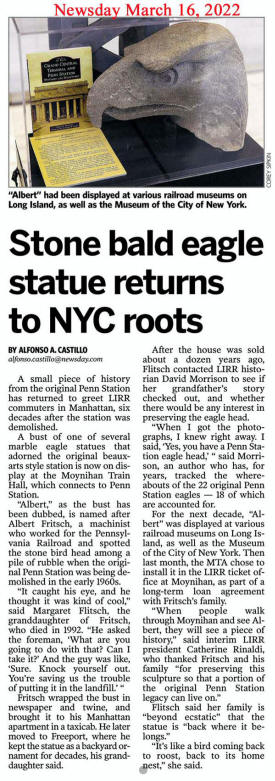
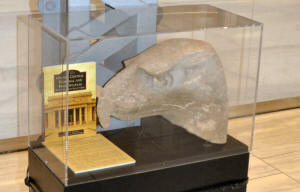
Eagle Albert display 2/18/2022
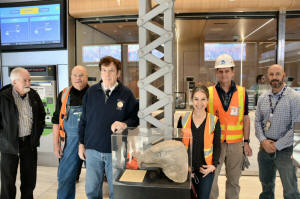
Steve Quigley, Don Fisher, John Hyland, Leslie Mesnick, Mark Kuehn,
Patrick Gerakis
Photos/Archive: Dave Morrison
GRAND CENTRAL STATION EAGLES
The majestic eagle perched on the Viaduct at East 42nd Street and Vanderbilt Ave is actually a relic from the previous Grand Central Terminal, which stood here from 1898-1910. The eagles numbered 10 or 11 (accounts differ). This eagle was discovered at the Capuchin Theological Seminary in Garrison, NY.
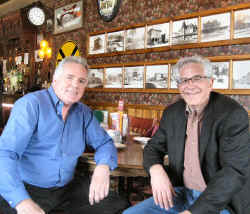
David Morrison (l) and Wes Cowan, one of the hosts on History Detectives which aired on August 20, 2007 (Season 5, Episode 9). That segment dealt with the Grand Central Station eagles.
Bronxville, NY
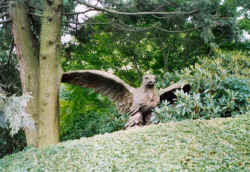
This is the eagle that is now over the Lexington Ave entranceway. It was placed there by the MTA because it was a new entranceway and thus did not impinge upon the building's landmark status. Photo late 1990's. Photo/Archive: Dave Morrison
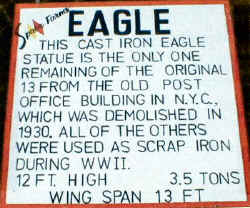
The Space Farms eagle and the erroneous plaque that they had beside the eagle, prior to learning that the eagle was from GCT.
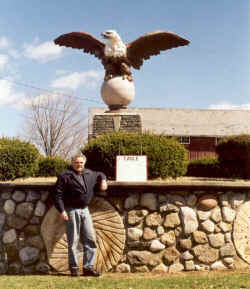
Cold Spring Harbor, NY
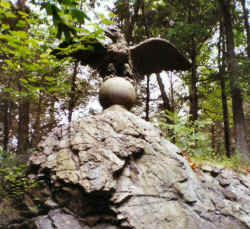
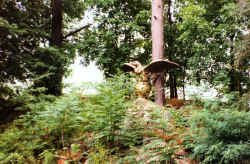
These two eagles are on the grounds of St. Basil's Academy and are not "matched" as are the eagles at the Vanderbilt Museum. One eagle is on top of a rock cliff beside the entrance roadway and is painted black. The other eagle is further down the road and set back from the roadway, somewhat in the woods. This eagle has a bronzed appearance.
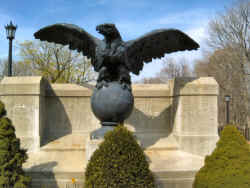
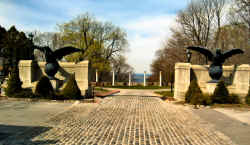
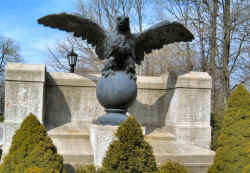
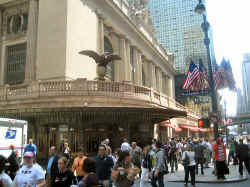
Garrison, NY overlooking the Hudson River. It was a most apropos location, but one had to walk through the woods to get to the eagle. I imagine that it looked beautiful from the vantage of a boat out on the river.
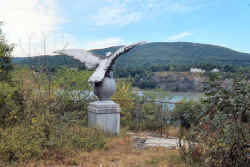
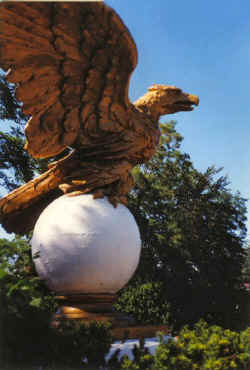
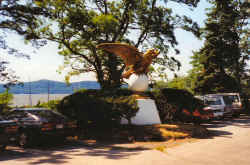
North Tarrytown, aka Philipse Manor, which later became Sleepy Hollow, NY.
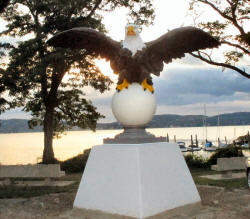
Philipse Manor Eagle restored 9/13/2019
Photo/Archive: Morrison
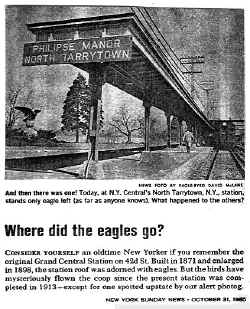
New York Daily News by David McLane 10/31/1965
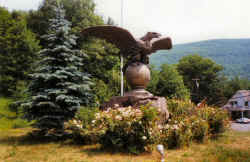
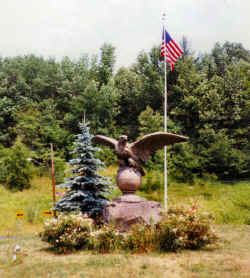
This was the eagle purchased by David McLane in 1966 for 100 bucks. It was one of the two eagles located in Mt. Vernon.
Sadly, McLane passed away before this eagle was dedicated on Aug 23, 1986
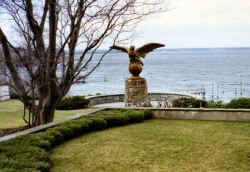
This one is on the private estate of the late Edwin S. Marks.
Another beautiful location for an eagle, overlooking the LI Sound.
